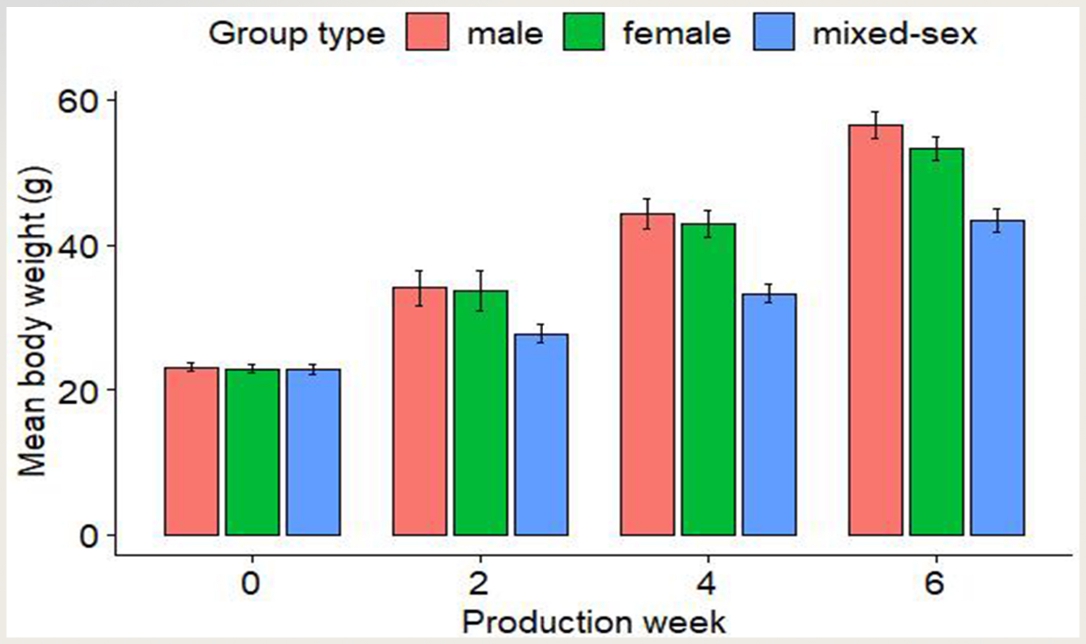Comparative growth performance of Nile tilapia (Oreochromis niloticus) sex groups intank culture: A hormone-free approach for sustainable aquaculture in Dodoma, Tanzania
DOI:
https://doi.org/10.59120/drj.v15i4.267Keywords:
Growth performance, monosex tilapia, non-hormonal sex separation, sustainable fish farming, tank cultureAbstract
Male tilapia are globally preferred in aquaculture for their superior growth and uniform harvest sizes. However, hormonal sex reversal techniques used to produce all-male populations can pose health and environmental risks. This study investigated the growth performance of manually separated monosex males, monosex females, and mixed-sex groups of Nile tilapia (Oreochromis niloticus) in tank culture as a sustainable and hormone-free alternative. Over six weeks, the study measured various morphometric parameters, weight gain, specific growth rates, water quality parameters, and condition factors. The fish were fed isonitrogenous commercial feed, and the feeding regime was adjusted based on their weight. Results revealed that monosex tilapia groups attained higher growth rates than mixed-sex groups, with males achieving an average final weight of 56.5 g, followed by females at 53.3 g, and mixed-sex groups at 43.3 g. Males had higher morphometric values compared to females and mixed-sex groups. The water quality parameters remained optimal across all groups, indicating that sex composition does not impact water management. Monosex females and mixed-sex groups exhibited better condition factors. The study concludes that tilapia farming can be effectively conducted with either mono-sex male or monosex female tilapia, as their growth rates do not differ significantly. Further research and development of techniques to ease the separation of sexes and enhance the growth rates of monosex female tilapia are recommended as a viable, hormone-free alternative for sustainable aquaculture.
Downloads

Downloads
Published
Issue
Section
License
Copyright (c) 2024 Angelina Michael, Rosemary Peter Mramba

This work is licensed under a Creative Commons Attribution-NonCommercial 4.0 International License.
DRJ is an open-access journal and the article's license is CC-BY-NC. This license allows others to distribute, remix, tweak, and build on the author's work, as long as they give credit to the original work. Authors retain the copyright and grant the journal/publisher non-exclusive publishing rights with the work simultaneously licensed under a https://creativecommons.org/licenses/by-nc/4.0/.









